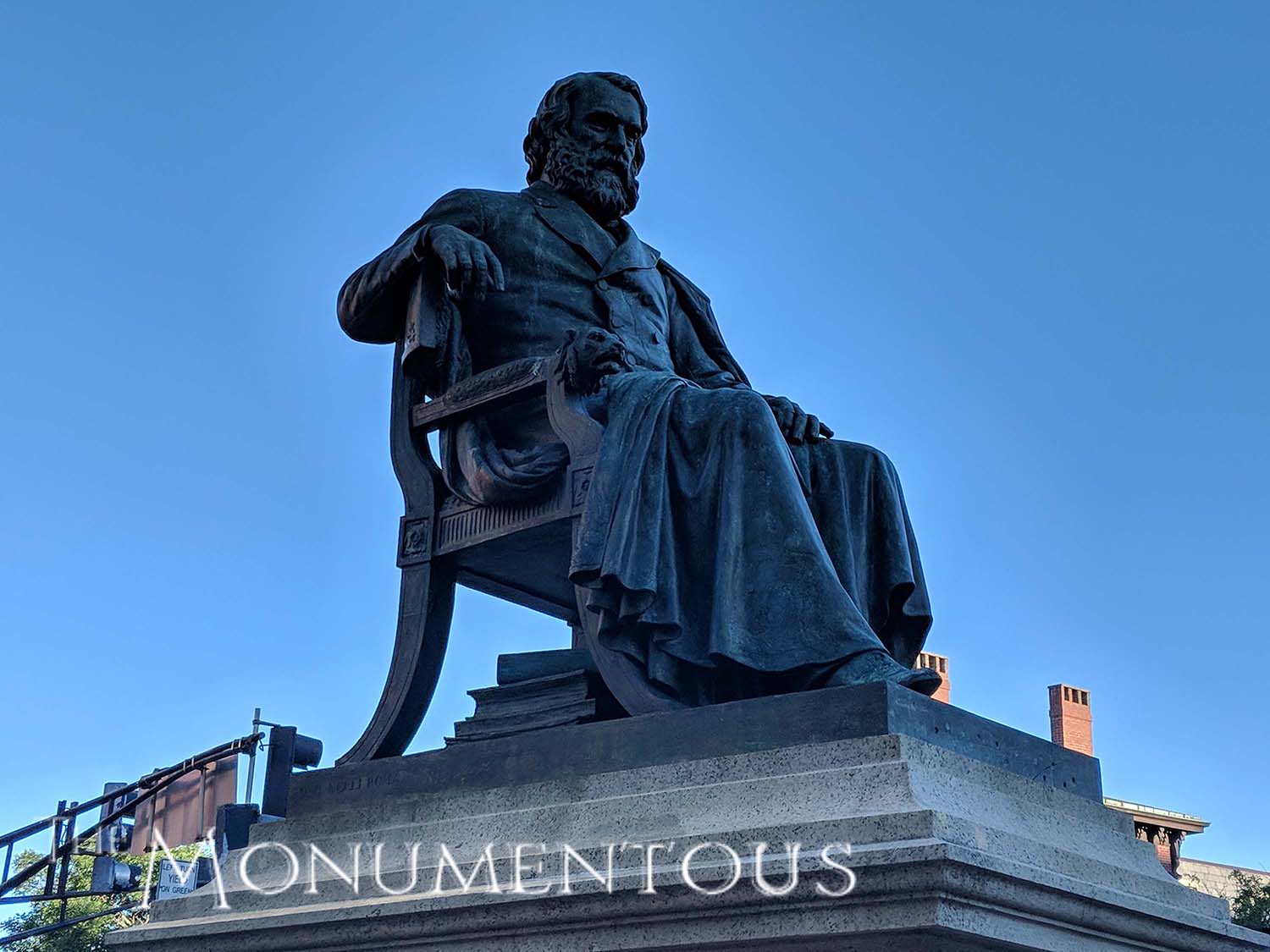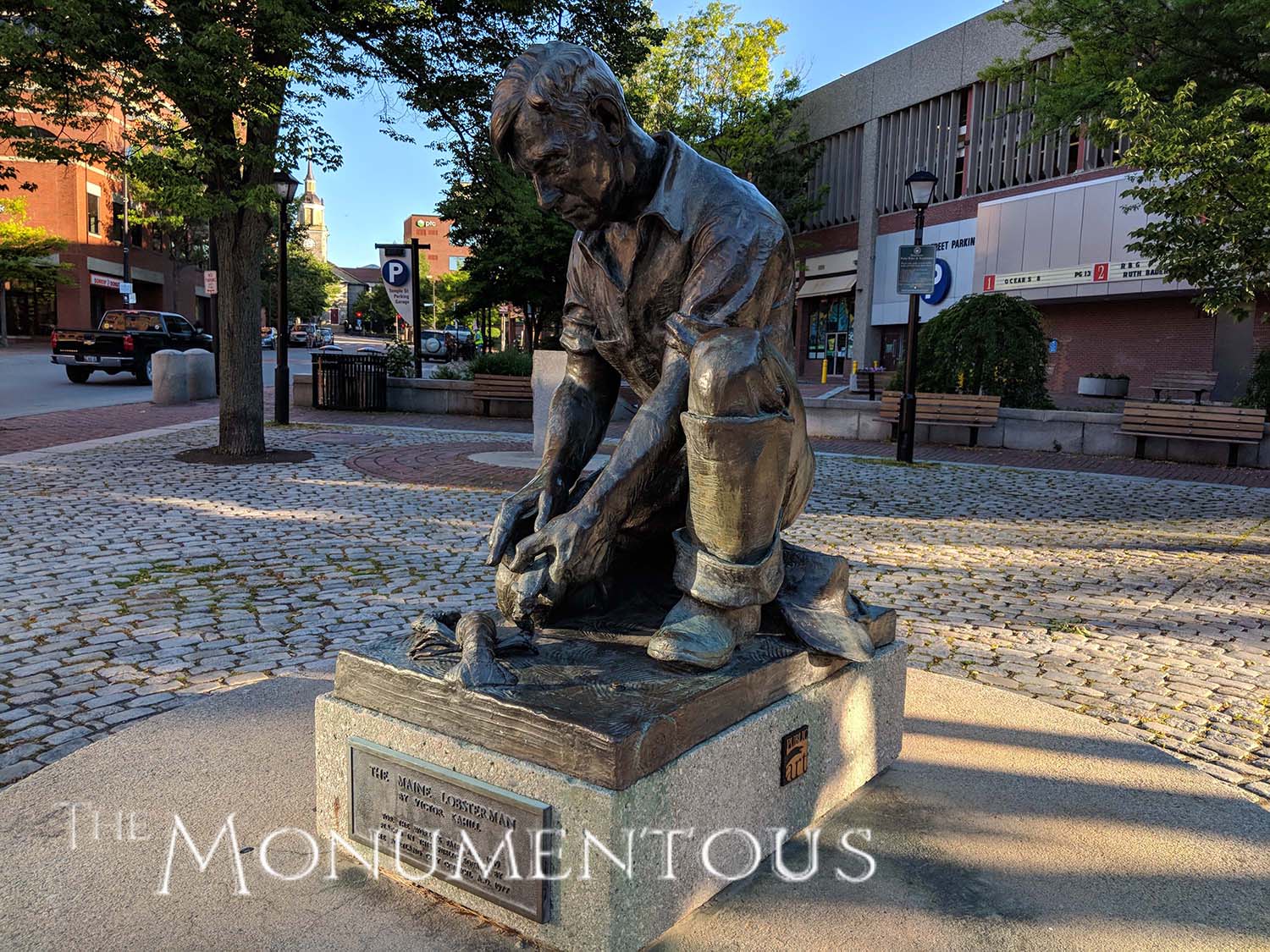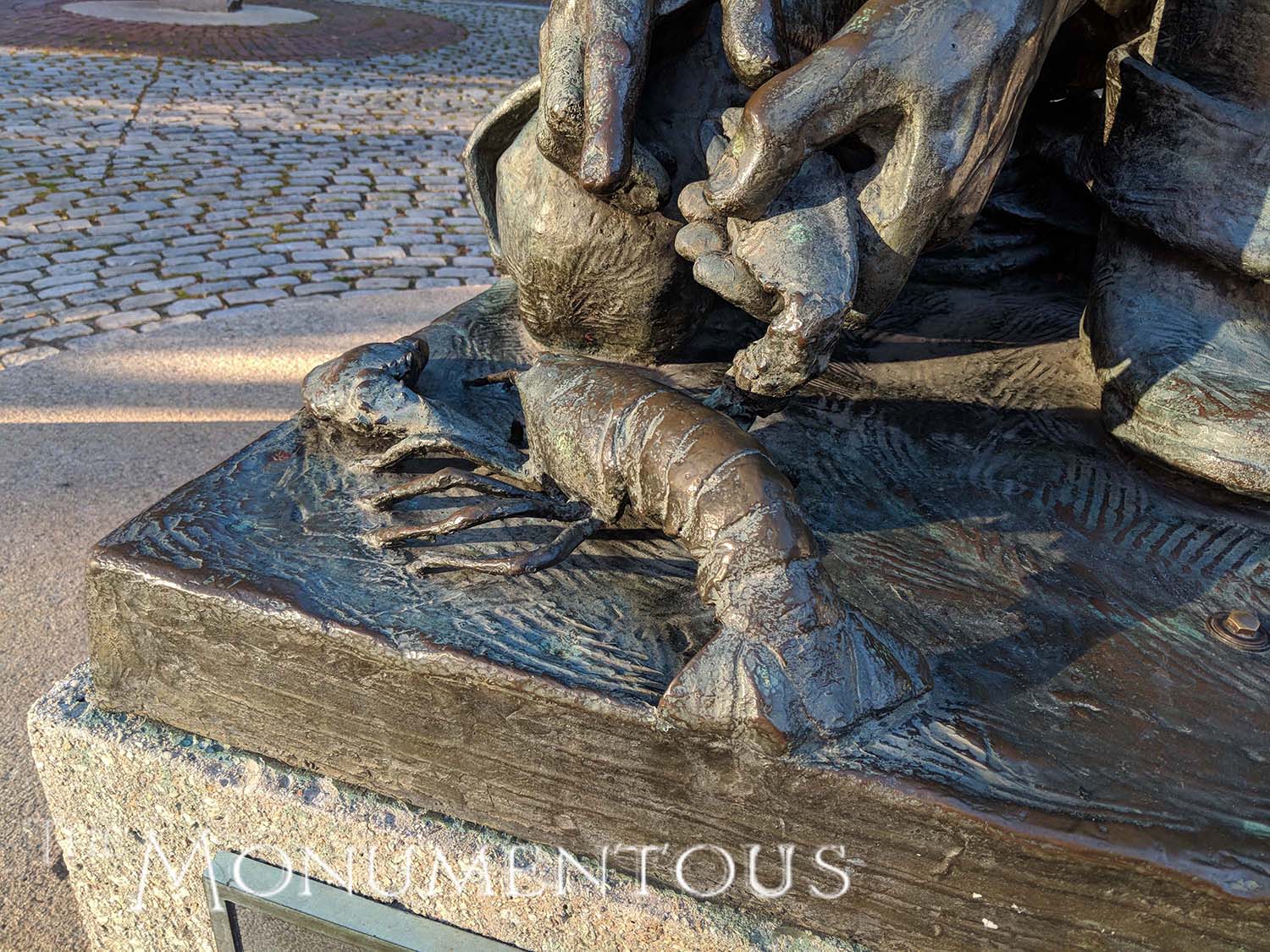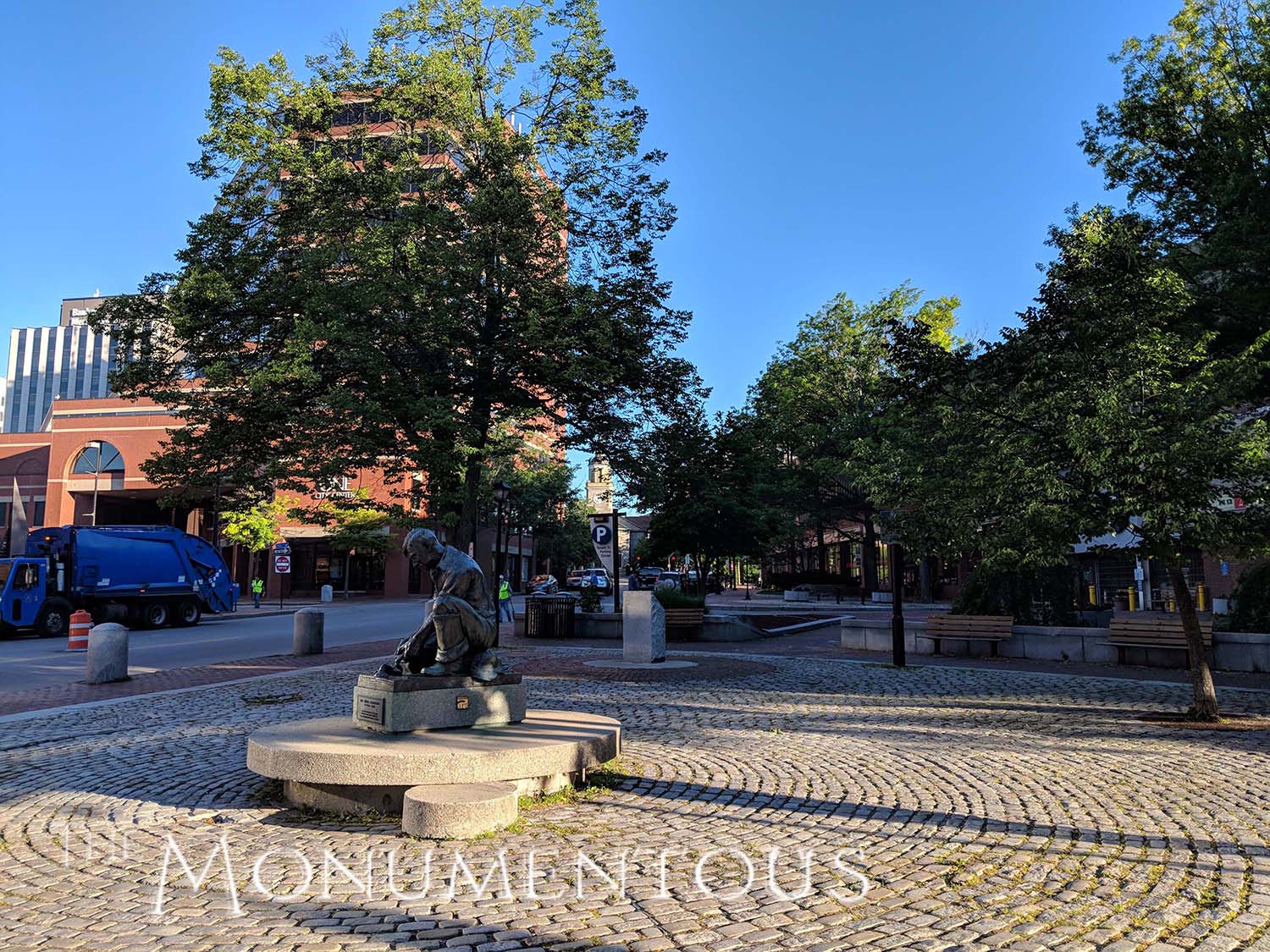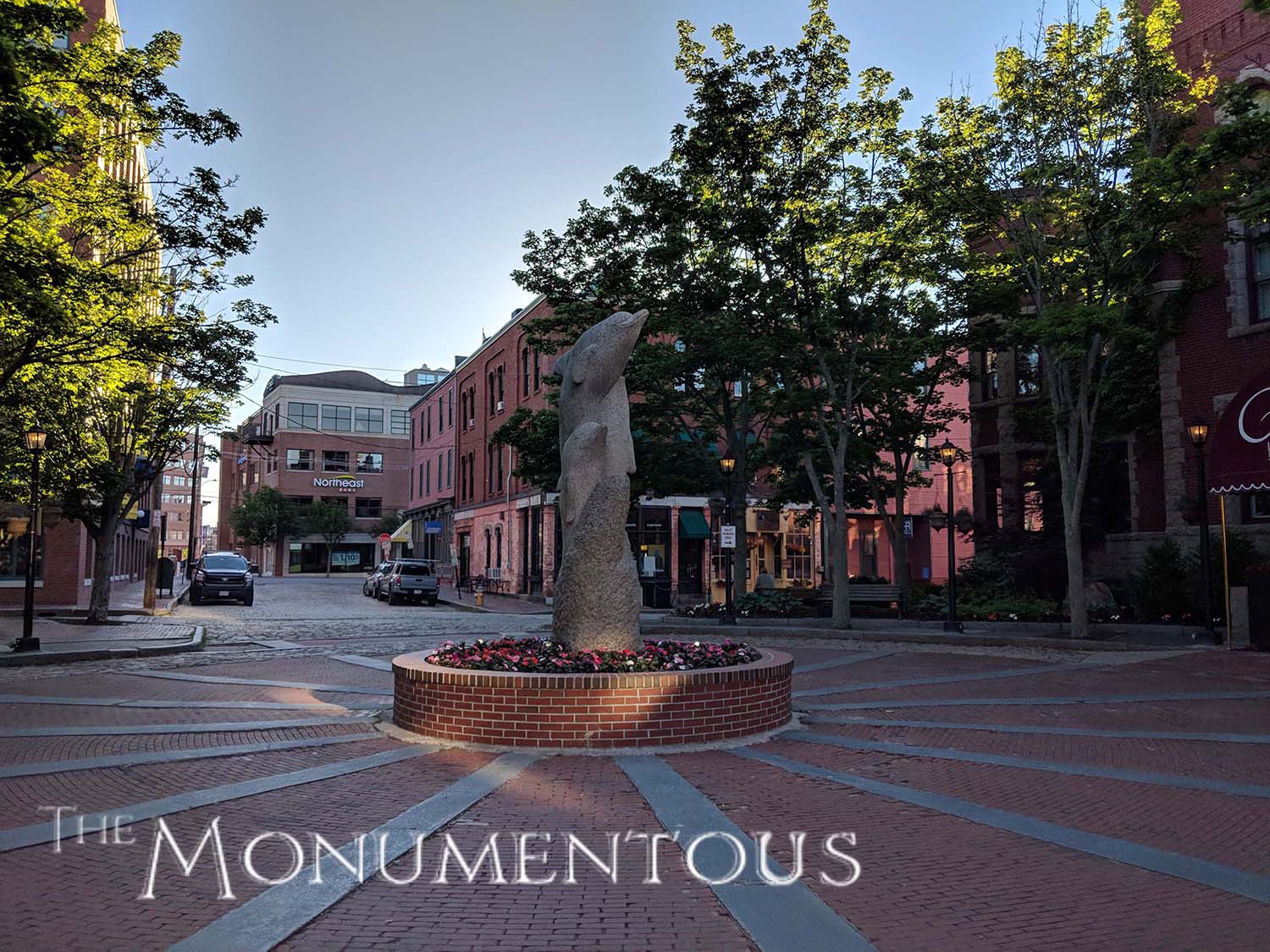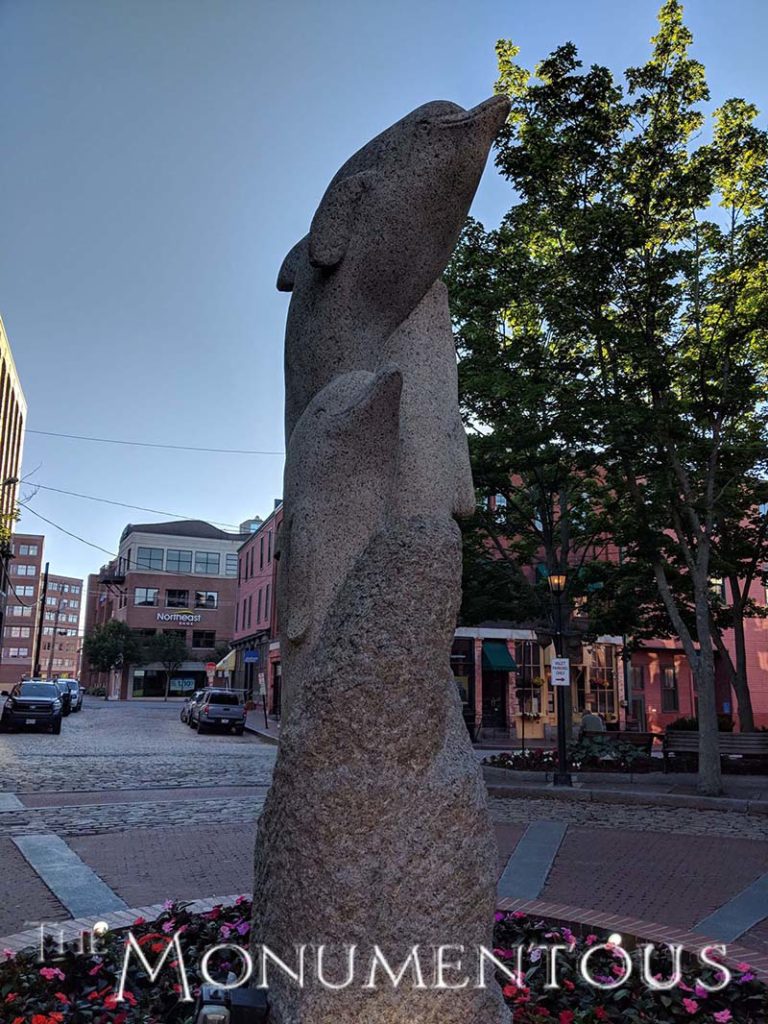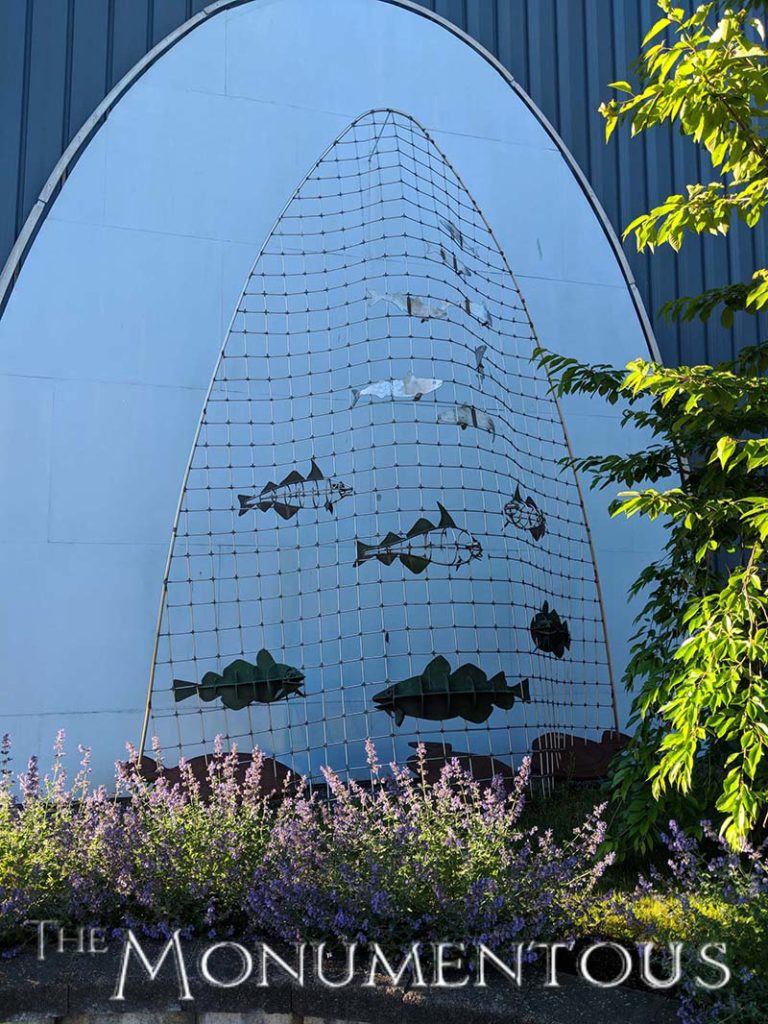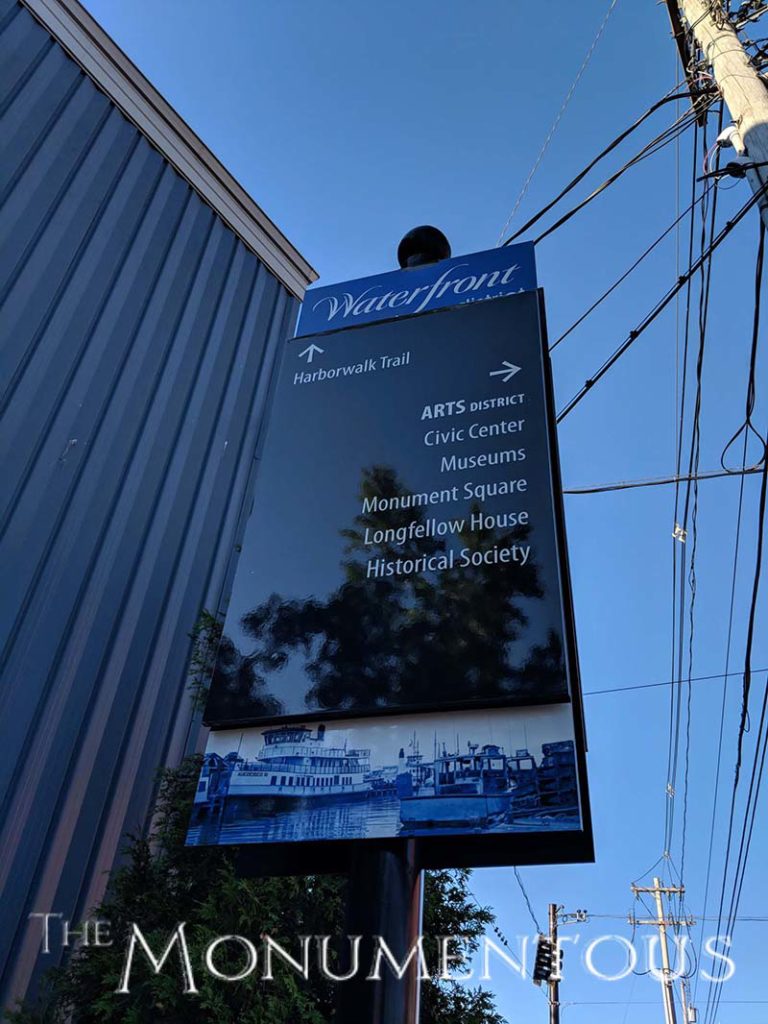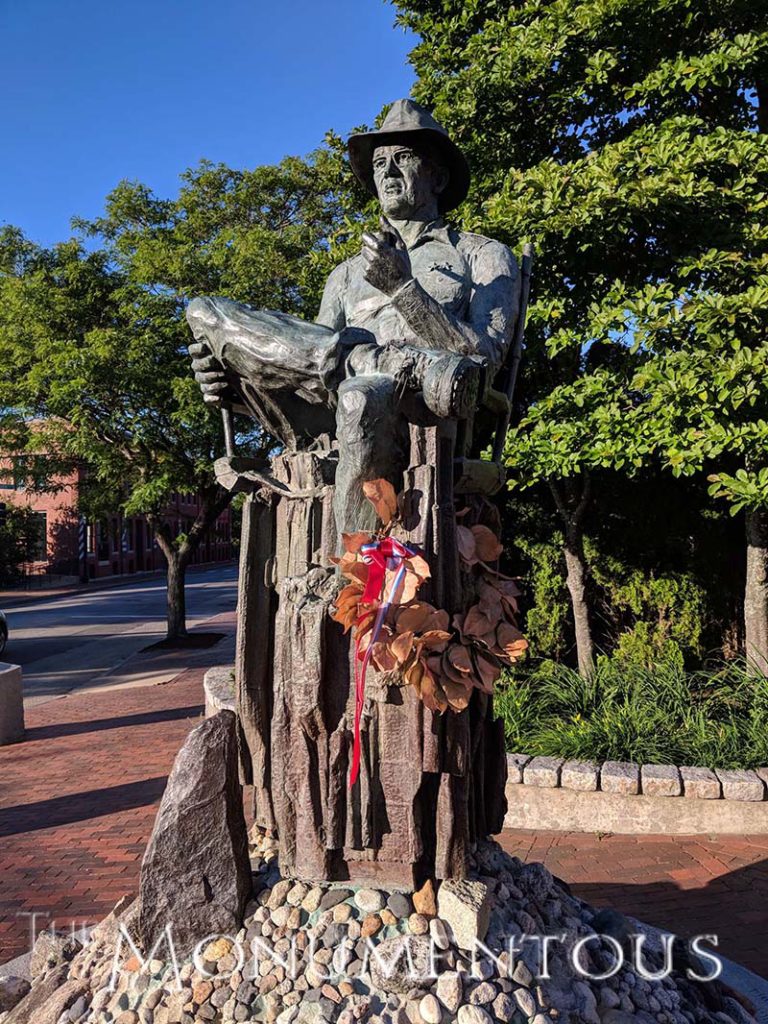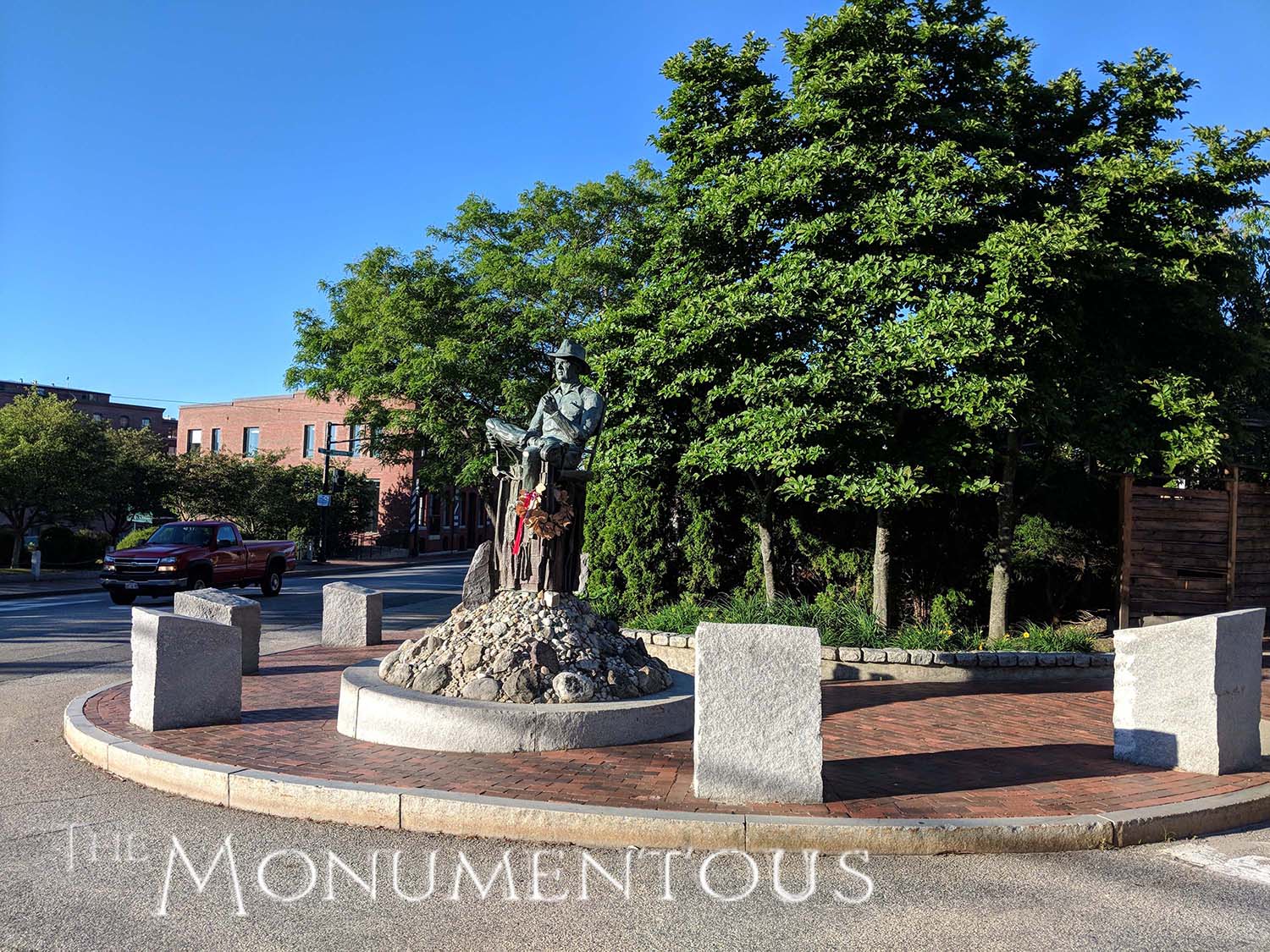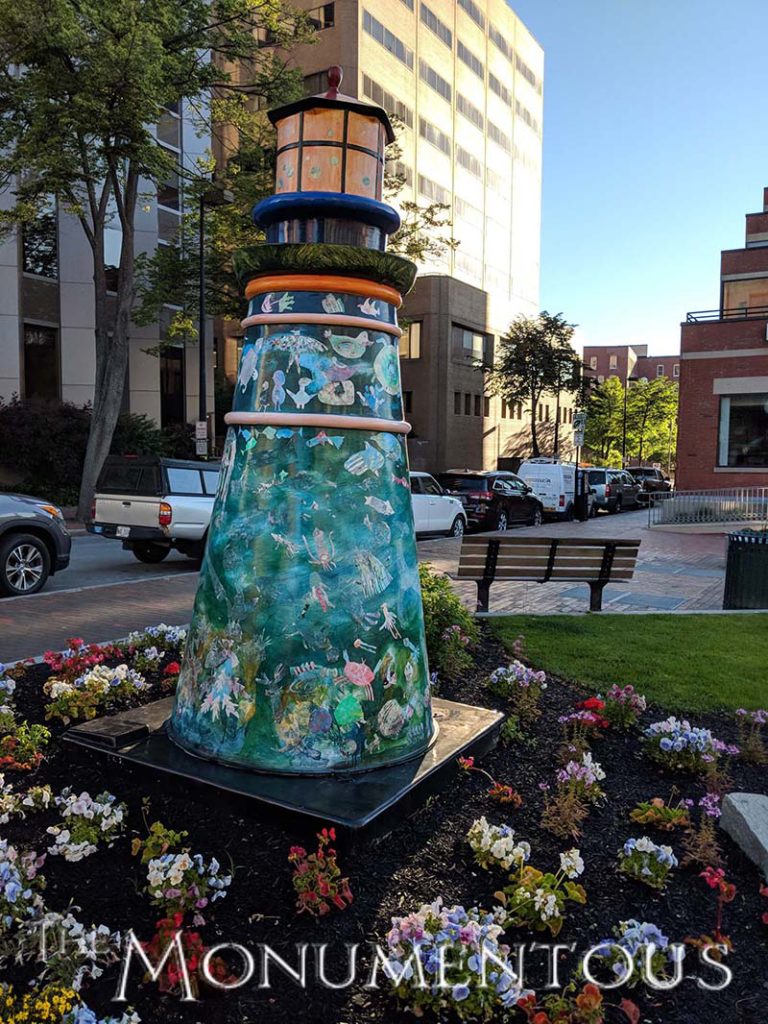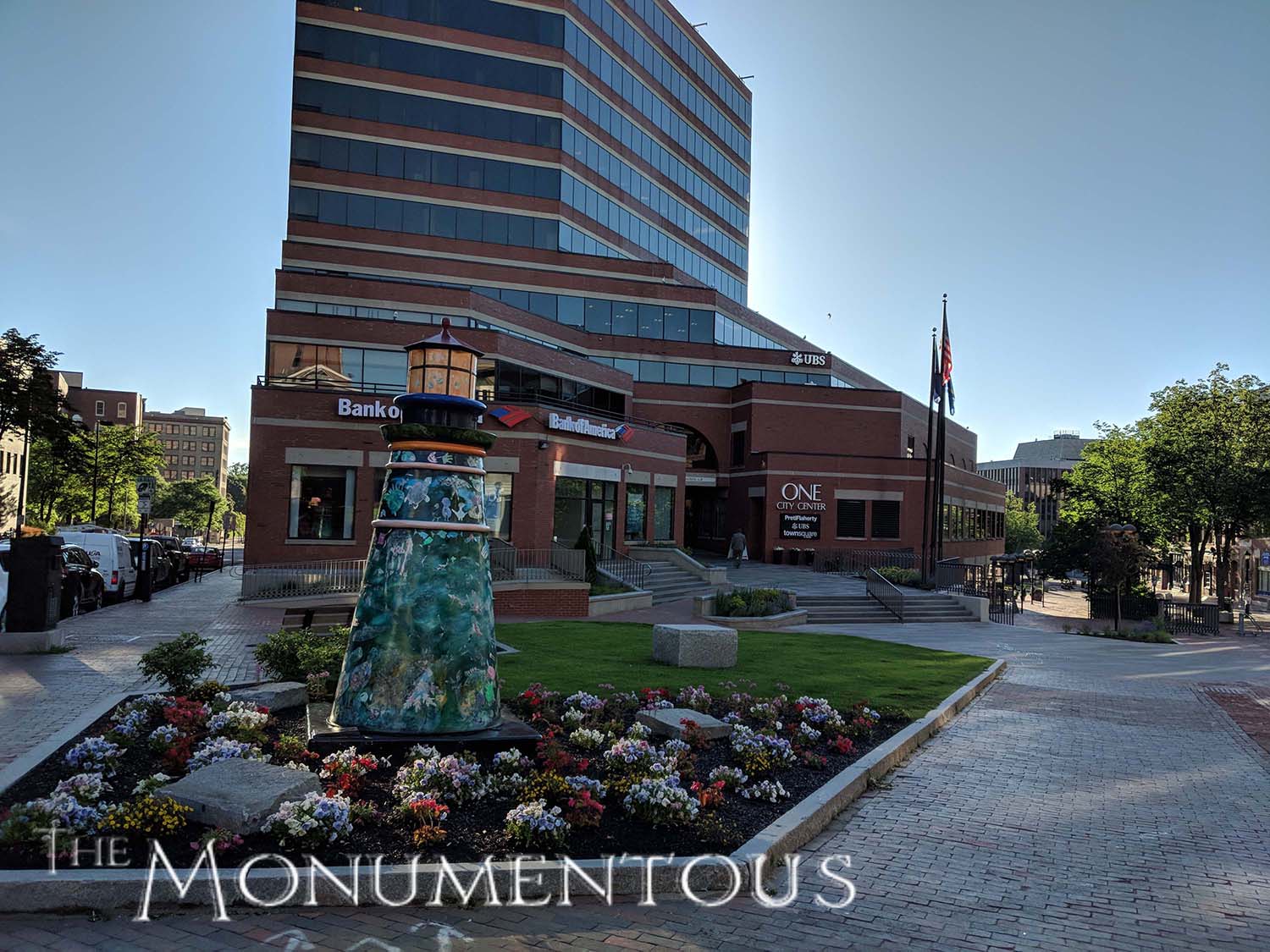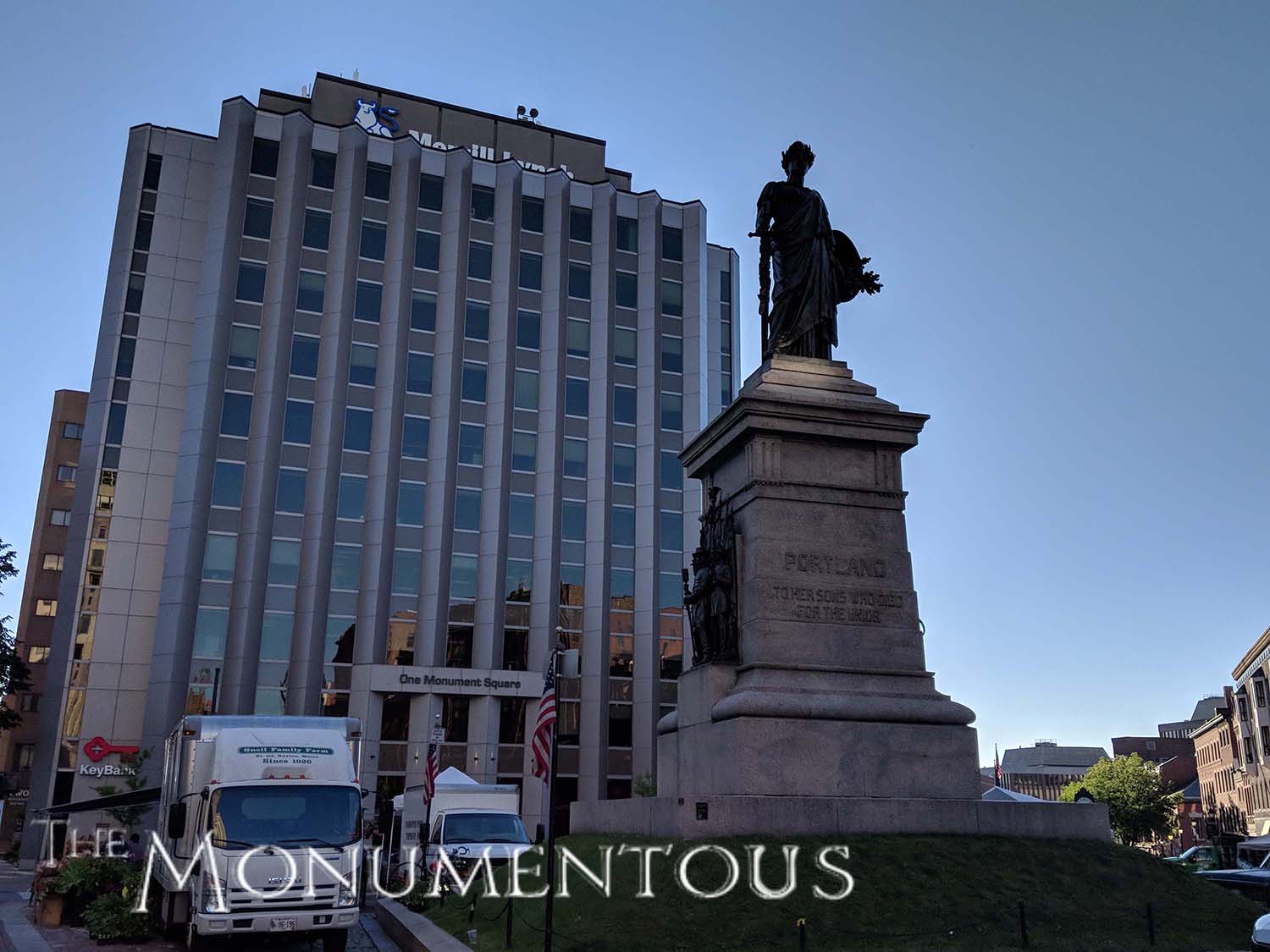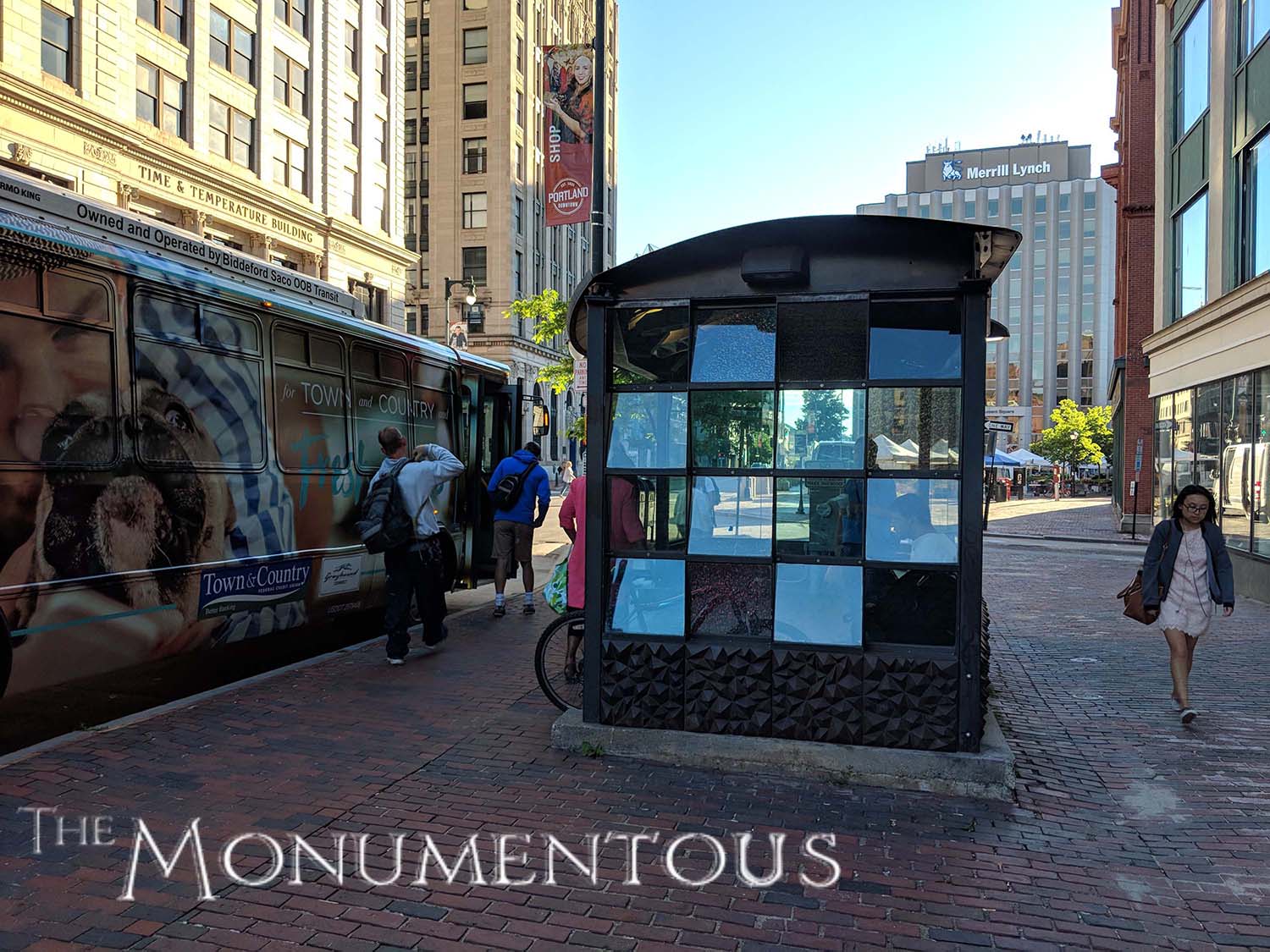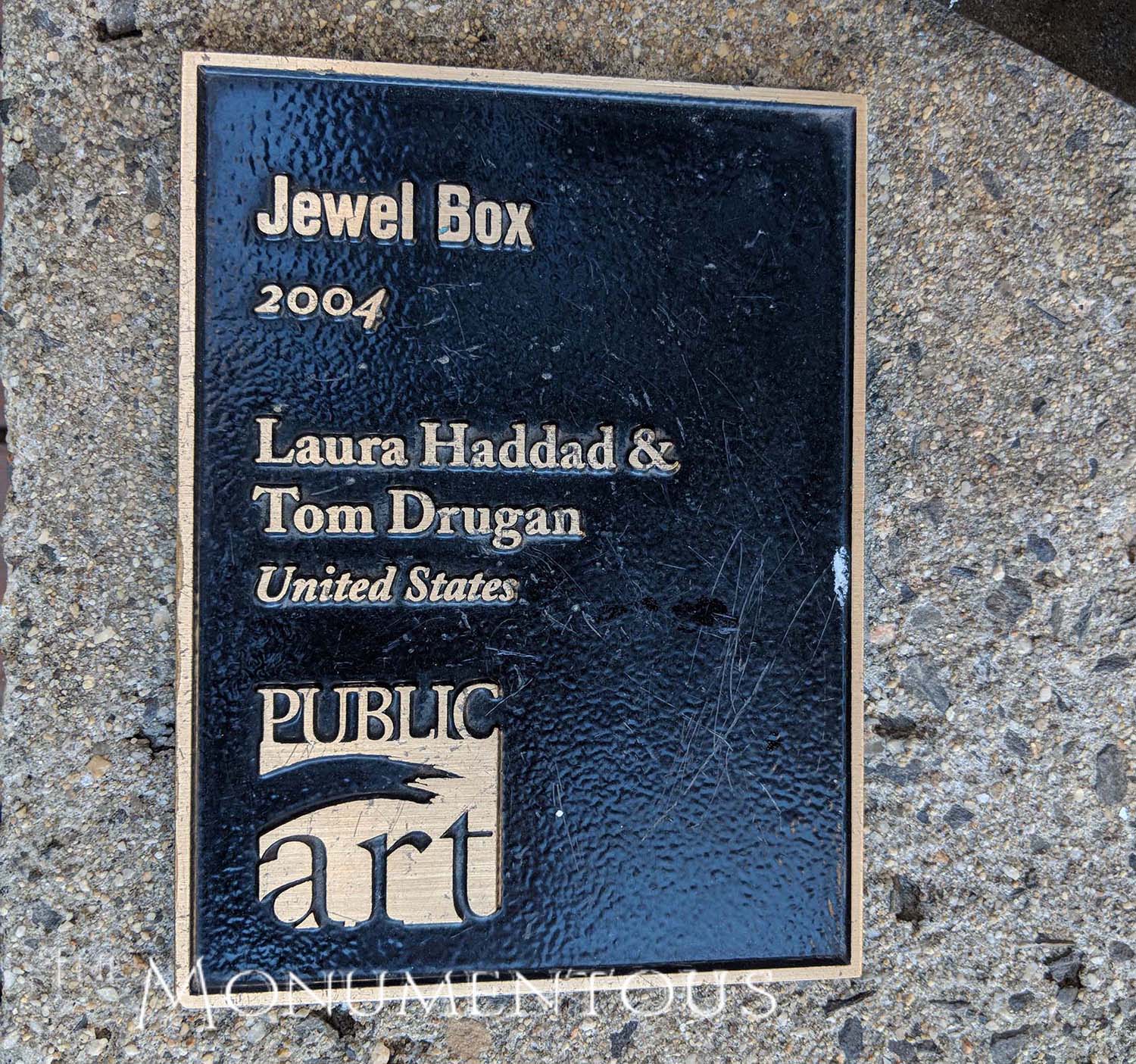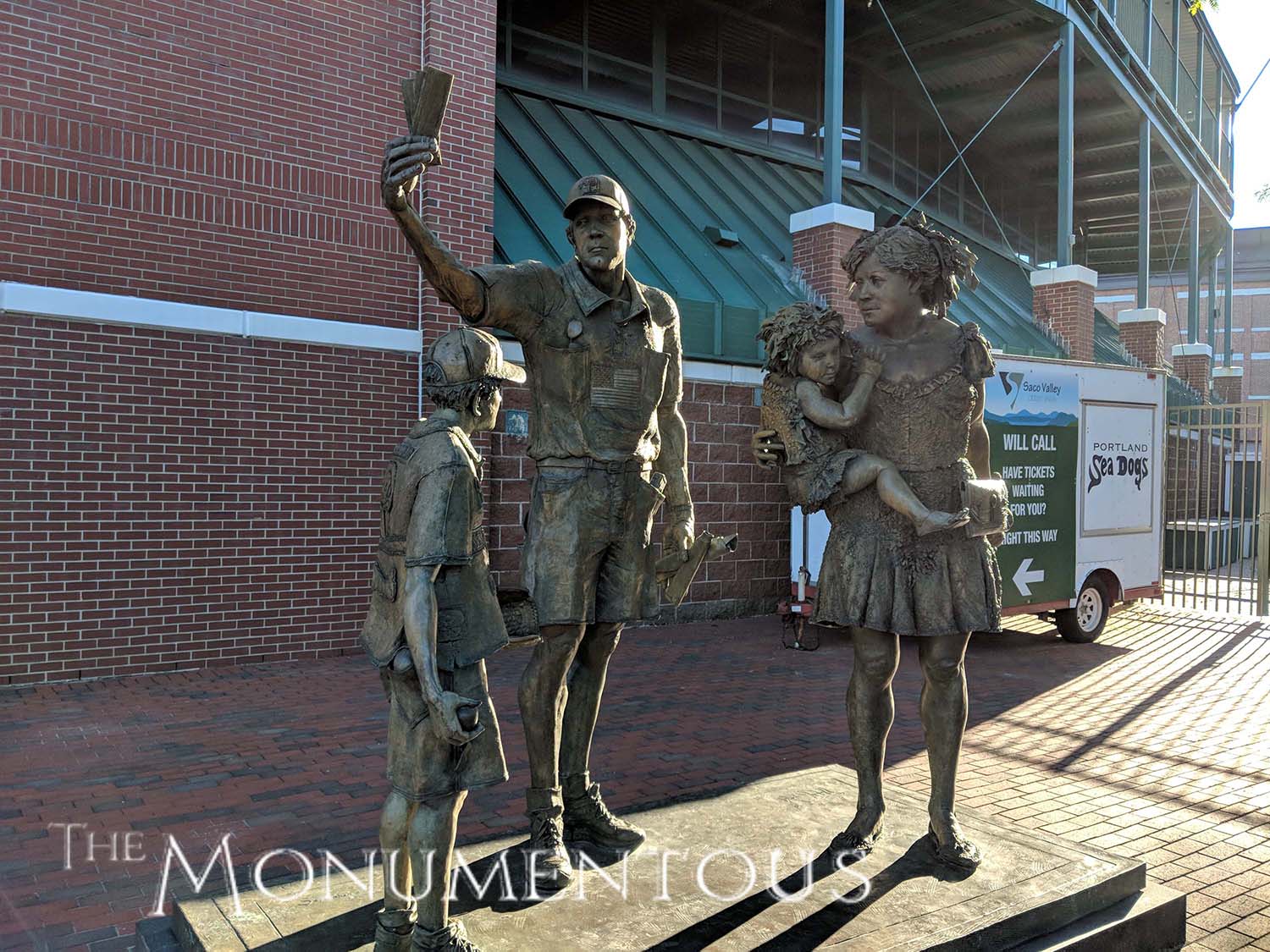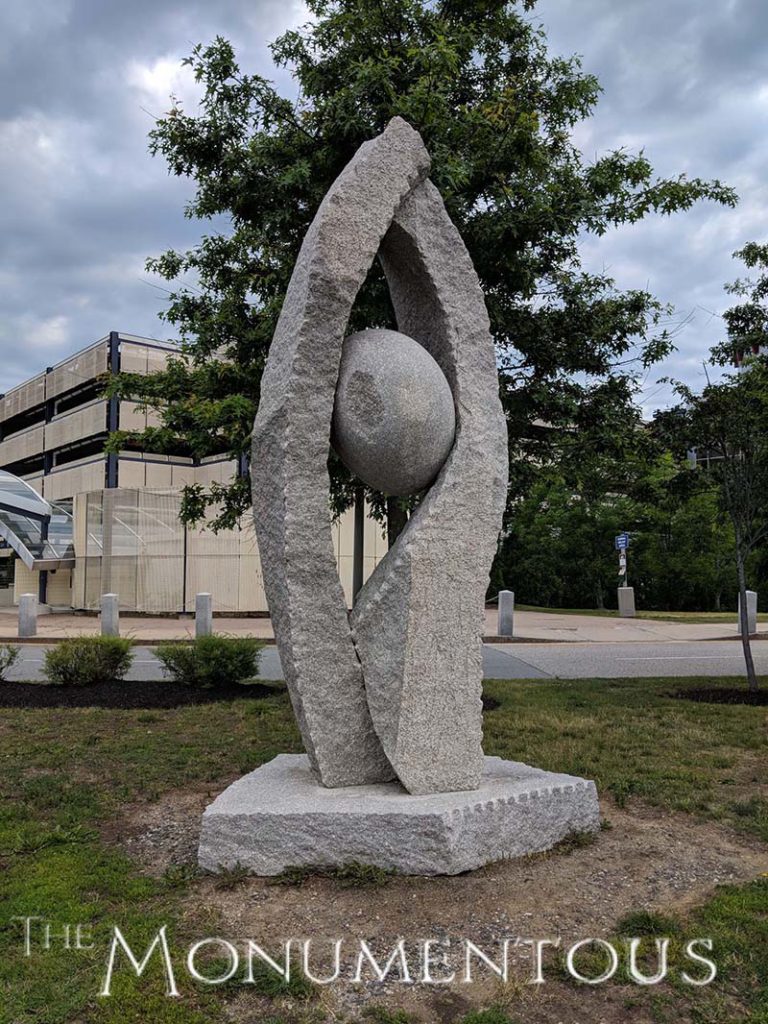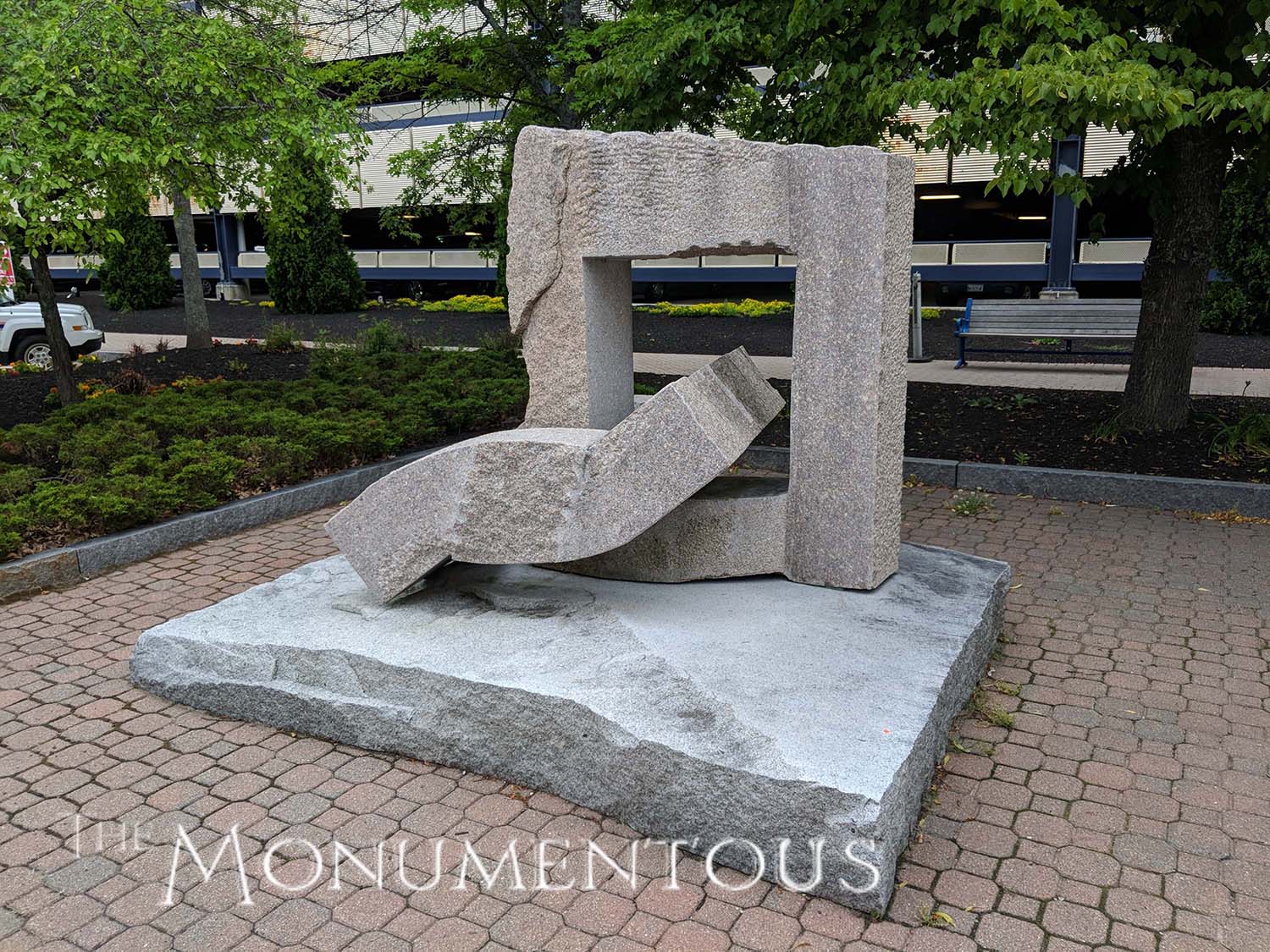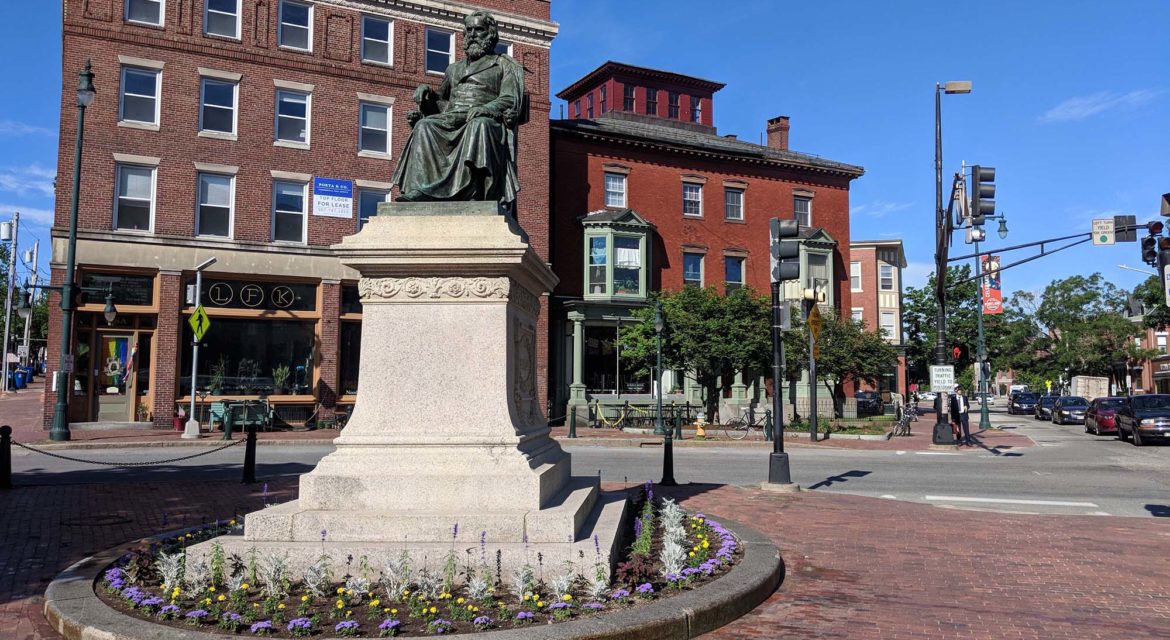Portland is the most populous city in Maine, and that fact has undoubtedly contributed to the city’s commitment to erecting monuments and other artwork that commemorates and celebrates a variety of people and events throughout the city. With the Town Square in the center of the city being named “Monument Square”, it’s easy to see how and where these types of monuments have influenced the culture and economy of the city directly and indirectly.
 Our Lady of Victories is located in Monument Square, on the former site of Portland’s 1825 city hall. It was erected in 1873 in honor of the 5,000 lives the city lost to the Civil War, fully one-sixth of its population. The central figure, a fourteen-foot high bronze, female “Victory,” is a symbol of unity. She is modeled after Minerva, the goddess of both wisdom and war. She stands atop Hunt’s Doric-inspired pedestal of granite adorned on two sides by groups of bronze figures, one representing the Army and the other the Navy.
Our Lady of Victories is located in Monument Square, on the former site of Portland’s 1825 city hall. It was erected in 1873 in honor of the 5,000 lives the city lost to the Civil War, fully one-sixth of its population. The central figure, a fourteen-foot high bronze, female “Victory,” is a symbol of unity. She is modeled after Minerva, the goddess of both wisdom and war. She stands atop Hunt’s Doric-inspired pedestal of granite adorned on two sides by groups of bronze figures, one representing the Army and the other the Navy.
Franklin Simmons cast the piece, and he was the same artists that had created Portland’s Longfellow Memorial a few years earlier. Created to celebrate Portland’s native son, the sculpture depicts Longfellow seated with his right arm resting on the back of his chair, holding a scroll in his lap with his left hand. It has literally changed the city as well, since the square was redesigned in 2005 to create additional pedestrian space and landscaping. The monument was added to the National Register of Historic Places in 1990.
The art on display in the city is not limited to pieces from the 19th century though, as the Maine Lobsterman was dedicated in 1977, while the Hadlock Field Family Sculpture was installed in 2006. There is also a great deal of art on display at the Portland International Jetport, and that includes Jesse Salisbury’s Link series, which is a sculptural experiment of modular interlocking forms.
These are just a few examples of the everyday art residents and visitors come across in Portland, as there are numerous other displays all over the city. Some pieces are especially large and intricate, while others are on the smaller scale and not designed to do much more than brighten up a building. Efforts to highlight where these pieces can be found with maps and markers allow visitors to find them that much easier and give them context.
 For some cities, displays of everyday art are more about the beatification of a particular place or area, but much of the art on display in Portland is not as focused on functionality. Instead, efforts to honor a specific person or event showcase the importance of history to the area, and celebrate the culture in a powerful way. Doing so has opened up opportunities for economic development, but the inspiration these pieces enable for both residents and tourists have helped to establish an even more powerful legacy.
For some cities, displays of everyday art are more about the beatification of a particular place or area, but much of the art on display in Portland is not as focused on functionality. Instead, efforts to honor a specific person or event showcase the importance of history to the area, and celebrate the culture in a powerful way. Doing so has opened up opportunities for economic development, but the inspiration these pieces enable for both residents and tourists have helped to establish an even more powerful legacy.
To see much more info about all of the pieces of public art in Portland, visit the Public Art in Portland site.

